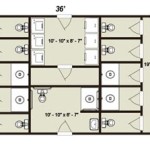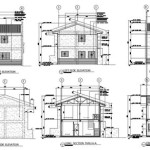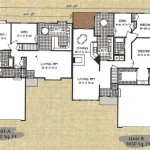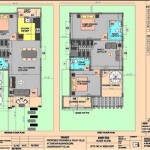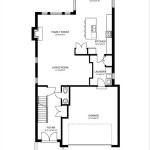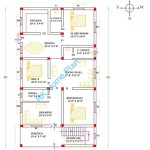Antique Craftsman House Plans: A Guide to Timeless Architectural Design
Antique Craftsman house plans represent a significant period in American architectural history, embodying principles of simplicity, functionality, and handcrafted detail. These plans offer a glimpse into a design philosophy that prioritizes quality materials, open living spaces, and a connection to the natural environment. Understanding the nuances of these plans is crucial for those considering building a new home inspired by the Craftsman era or restoring an existing one.
The Craftsman movement, which flourished from the late 19th century into the early 20th century, was a direct reaction against the ornate and mass-produced styles prevalent during the Victorian era. It emphasized honest construction, natural materials, and a return to artisanal craftsmanship. This philosophy is clearly reflected in the defining characteristics of Craftsman house plans, which prioritize functionality and an aesthetically pleasing integration with the surrounding landscape.
Numerous resources exist for locating antique Craftsman house plans. Historical societies, architectural archives, and online repositories offer a wealth of information. However, it is essential to carefully evaluate the source and authenticity of any plan before relying upon it for construction or restoration purposes. Reproduction plans, often adapted for modern building codes and conveniences, are also available, offering a balance between historical accuracy and contemporary living.
Key Features of Antique Craftsman House Plans
Craftsman house plans are characterized by a recognizable set of features that contribute to their distinctive aesthetic and functionality. Identifying these key elements is crucial for both understanding the style and ensuring that any design, whether new construction or renovation, accurately reflects the Craftsman aesthetic.
One defining characteristic is the use of natural materials. Wood, stone, and brick are prominent, often left exposed to showcase their natural textures. Wood siding, often in a shingle or clapboard style, is common, while stone is frequently used for foundation walls, chimneys, and porch supports. Interior wood trim, including window and door casings, baseboards, and built-in cabinetry, is typically unpainted or stained to highlight the natural grain and color of the wood.
Low-pitched roofs with wide overhanging eaves are another hallmark of Craftsman design. These roofs not only provide protection from the elements but also contribute to the horizontal emphasis of the house. Exposed rafters and decorative brackets under the eaves further enhance the architectural details. Dormers, often gabled, are frequently incorporated to provide additional light and ventilation to the attic space.
Porches, often deep and wide, are integral to Craftsman homes. These outdoor living spaces provide a transition between the interior and exterior, fostering a connection to the surrounding environment. Porch supports are typically substantial, often featuring tapered columns or stone piers. The porch serves as both a welcoming entry and a functional outdoor space for relaxation and socializing.
The interior layout of a Craftsman home typically emphasizes open living spaces. Living rooms, dining rooms, and kitchens are often connected, creating a more informal and functional living environment. Built-in features, such as bookcases, window seats, and china cabinets, are common, maximizing space and adding character. Fireplaces, often clad in brick or stone, serve as focal points within the living room.
Large windows, often arranged in bands, provide ample natural light. Casement and double-hung windows are common choices, frequently featuring divided lights or stained glass accents. These windows not only illuminate the interior but also contribute to the overall aesthetic appeal of the house.
Sourcing and Interpreting Antique Craftsman House Plans
Finding and understanding antique Craftsman house plans requires a strategic approach. Understanding how to locate credible sources and interpret the historical information provided within those plans is paramount to successful implementation.
Begin by exploring historical societies and architectural archives. These institutions often hold extensive collections of original house plans, including those from the Craftsman era. Local libraries may also have resources related to regional architectural history. Searching online databases and repositories is another valuable avenue for finding antique plans. However, it is essential to verify the authenticity and accuracy of any plans found online.
When assessing antique Craftsman house plans, pay close attention to the details provided. The plans should include detailed floor plans, elevations, and sections. Look for notes on materials, construction methods, and specific dimensions. These details are crucial for understanding the original design intent and for accurately replicating or adapting the plan for modern construction.
Be aware that antique plans may not meet current building codes or standards. It is essential to consult with a qualified architect or engineer to ensure that any plan is adapted to comply with modern requirements. This may involve modifications to the structural system, electrical wiring, plumbing, and insulation.
Consider the orientation of the house on the site. Craftsman homes are often designed to take advantage of natural light and ventilation. The plans may indicate the optimal orientation for solar gain and natural cooling. Take these considerations into account when siting a new Craftsman home or when restoring an existing one.
Examine the landscaping plans, if available. Craftsman homes are often designed to blend seamlessly with the surrounding landscape. The landscaping plans may include information on native plants, garden designs, and outdoor living spaces. Incorporating these elements into the overall design can enhance the authenticity and appeal of a Craftsman home.
Adapting Antique Craftsman House Plans for Modern Living
While antique Craftsman house plans offer a valuable glimpse into the past, they often need to be adapted to meet the needs of modern living. Balancing historical accuracy with contemporary functionality requires careful consideration and thoughtful design choices.
One common adaptation involves updating the kitchen. Antique Craftsman kitchens were typically smaller and less equipped than modern kitchens. Expanding the kitchen and incorporating modern appliances and storage solutions can enhance its functionality while maintaining the Craftsman aesthetic. Consider using natural materials, such as wood cabinets and granite countertops, to complement the overall design.
Another important adaptation involves updating the bathrooms. Antique Craftsman bathrooms were often utilitarian and lacked the amenities found in modern bathrooms. Adding features such as separate showers, soaking tubs, and double vanities can improve the comfort and convenience of the bathrooms. Consider using vintage-inspired fixtures and finishes to maintain the historical character of the house.
Improving energy efficiency is another essential consideration. Antique Craftsman homes were often poorly insulated and lacked modern energy-efficient windows and doors. Upgrading the insulation, windows, and doors can significantly reduce energy consumption and improve the comfort of the house. Consider using energy-efficient materials and technologies that are compatible with the Craftsman aesthetic.
Adding modern conveniences, such as air conditioning and central heating, may also be necessary. These features can significantly improve the comfort of the house without detracting from its historical character. Consider concealing ductwork and equipment to minimize their visual impact.
Reconfiguring interior spaces may be necessary to accommodate modern lifestyles. Opening up the floor plan can create a more spacious and functional living environment. Consider removing non-structural walls to create larger rooms. However, be careful not to remove any original architectural details that contribute to the historical character of the house.
Maintaining the historical character of the house is paramount when adapting antique Craftsman house plans for modern living. Carefully consider any modifications and strive to preserve as many original features as possible. Seek the advice of a qualified architect or designer who is experienced in working with historic homes.

The Varina 1920s Bungalow 1923 Craftsman Style From Standard Homes Company Hous House Plans

Plan No R 856 C 1918 Cottage House By A E Stillwell Vintage Bungalows Plans Transition Bungalow Floor

Charming 1920s Home Design

Craftsman Style Bungalow House Plans Vintage Residential Architecture Of The 1920s C L Bowes Company 1923

1922 Craftsman Style Bunglow House Plan No L 114 E W Stillwell Co Bungalow Floor Plans Vintage

1915 Cozy Bungalow Vintage Plan With Garage Wm A Radford Original Design

1918 Bungalow House Plan By E W Stillwell Los Angeles Craftsman Home

1920s Classic Bungalow Small Homes Books Of A Thousand Atterbury Floor Plans Vintage House Craftsman

Sears Craftsman Style House Modern Home 264b240 The Corona 1916 Bungalow Plan

1908 Hip Roofed Craftsman Bungalow Plan Vintage Seattle House Plans No 131

